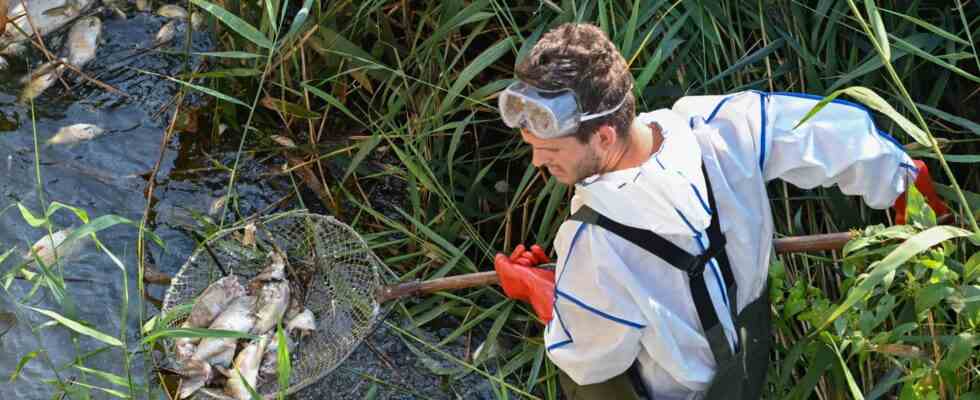Status: 08/16/2022 2:36 p.m
It is still unclear what caused the fish kill in the Oder. Why is the search for the cause so complicated and lengthy?
There are thousands of substances that could theoretically have caused the fish kill in the Oder. This number alone makes it clear how difficult it is to find the culprit. In addition: A search is easy if you have a concrete suspicion. But it is particularly difficult when you don’t know what you really want to find. It’s kind of like looking for a needle in a haystack.
The authorities on both sides of the border are currently taking different approaches. The Polish analyze fish carcasses. They are therefore investigating how the poison worked in the organism of the fish. After all, they have narrowed down the possible substances they want to look for: According to a statement by Brandenburg’s environment minister, Axel Vogel, to a number of 300. That can speed up the search. However, it is also possible that the person responsible is not among the 300.
Search for the causative substance
On the German side, the authorities are examining the water in search of the possible causative substance. To do this, they carry out a so-called broadband examination. With this, every substance in the water sample leaves a trace, its fingerprint, so to speak. This can then be compared with existing fingerprints in databases. If two finger prints are identical, a substance has been detected in the sample and might have the hot lead.
The problem with this is that this method requires a comparison. The fingerprint of the suspicious substance must therefore already be stored. If it is not, it must be “calibrated” afterwards, i.e. the substance must first be analyzed in its pure form. However, this is only possible if you already have a certain suspicion as to which substance it could be. Otherwise the trail will be in vain.
Analyze, compare, rework
Analyzing, comparing, possibly reworking – this is an extremely complex process that can take days. Especially since it is important that a result is absolutely correct and will stand up in court if it is to be used as evidence in a trial at some point. A quick shot is out of the question and the laboratory must of course be certified.
If you ask the Nature Conservation Union (NABU) in Brandenburg, then that is exactly a problem in the current situation. NABU State Managing Director Christiane Schröder says the Berlin-Brandenburg State Laboratory has been massively cut back by the state over the past ten years. In the meantime, it no longer has the capacity to carry out such complex investigations. The result: Private laboratories would first have to be found and commissioned, and then the samples would have to be brought there.
This is also one of the reasons why the search for the cause of the fish kill could take a long time.

